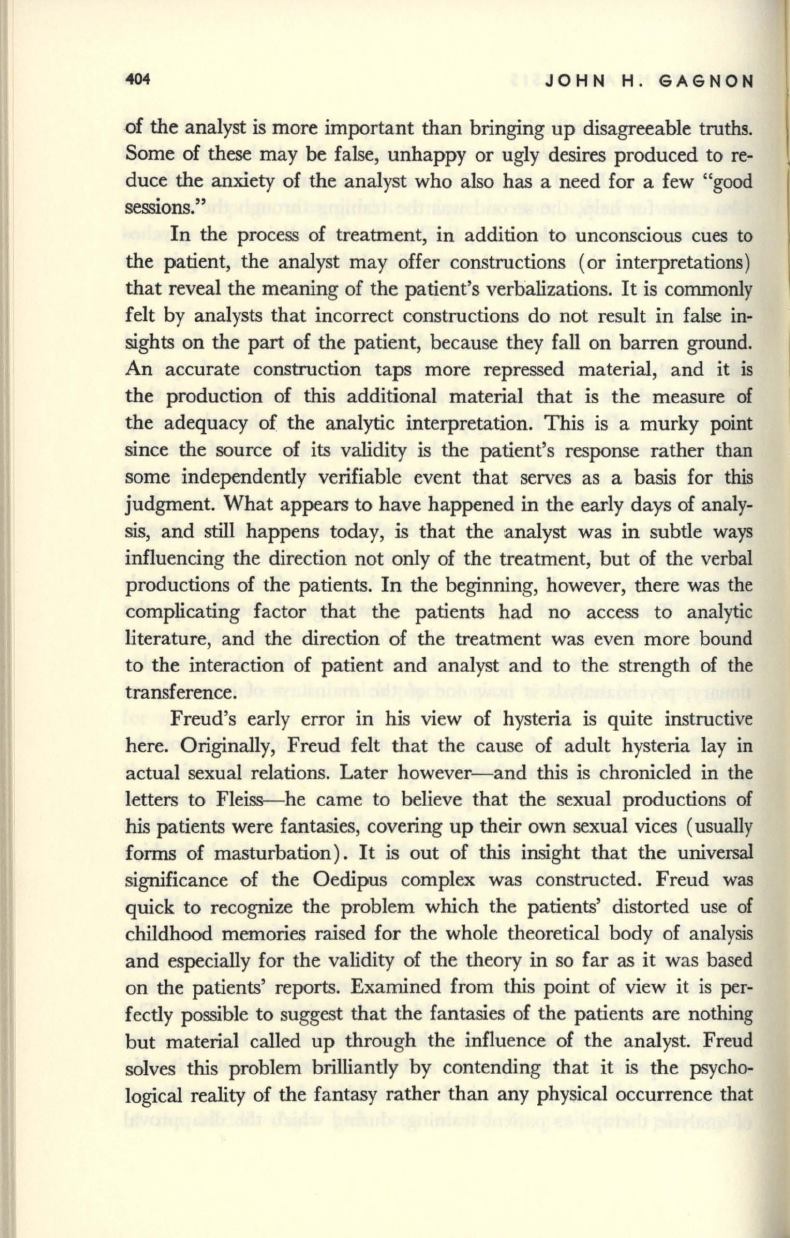
404
JOHN H. GAGNON
of the analyst
is
more important than bringing up disagreeable truths.
Some of these may be false, unhappy or ugly desires produced to re–
duce the anxiety of the analyst who also has a need for a few "good
sessions."
In the process of treatment, in addition to unconscious cues to
the patient, the analyst may offer constructions (or interpretations)
that reveal the meaning of the patient's verbalizations. It is commonly
felt by analysts that incorrect constructions do not result in false in–
sights on the part of the patient, because they fall on barren ground.
An accurate construction taps more repressed material, and it is
the production of this additional material that is the measure of
the adequacy of the analytic interpretation. This is a murky point
since the source of its validity
is
the patient's response rather than
some independently verifiable event that serves as a basis for this
judgment. What appears to have happened
in
the early days of analy–
sis, and still happens today, is that the analyst was in subtle ways
influencing the direction not only of the treatment, but of the verbal
productions of the patients. In the beginning, however, there was the
complicating factor that the patients had no access to analytic
literature, and the direction of the treatment was even more bound
to the interaction of patient and analyst and to the strength of the
transference.
Freud's early error in his view of hysteria is quite instructive
here. Originally, Freud felt that the cause of adult hysteria lay in
actual sexual relations. Later however-and this is chronicled in the
letters to Fleiss-he came to believe that the sexual productions of
his
patients were fantasies, covering up their own sexual vices (usually
forms of masturbation). It
is
out of this insight that the universal
significance of the Oedipus complex was constructed. Freud was
quick to recognize the problem which the patients' distorted use of
childhood memories raised for the whole theoretical body of analysis
and especially for the validity of the theory in so far as it was based
on the patients' reports. Examined from this point of view it is per–
fectly possible to suggest that the fantasies of the patients are nothing
but material called up through the influence of the analyst. Freud
solves this problem brilliantly by contending that it is the psycho–
logical reality of the fantasy rather than any physical occurrence that


